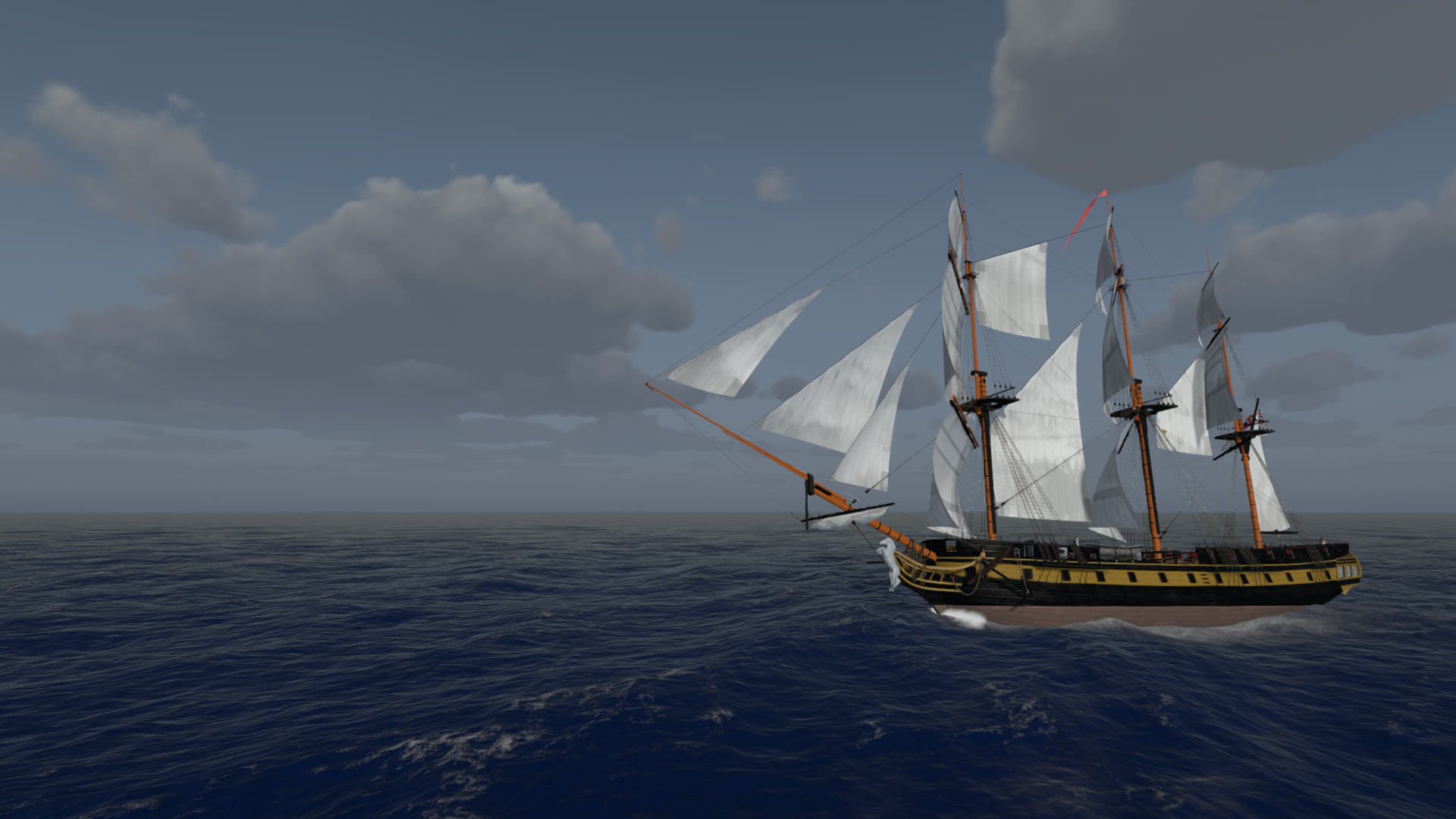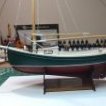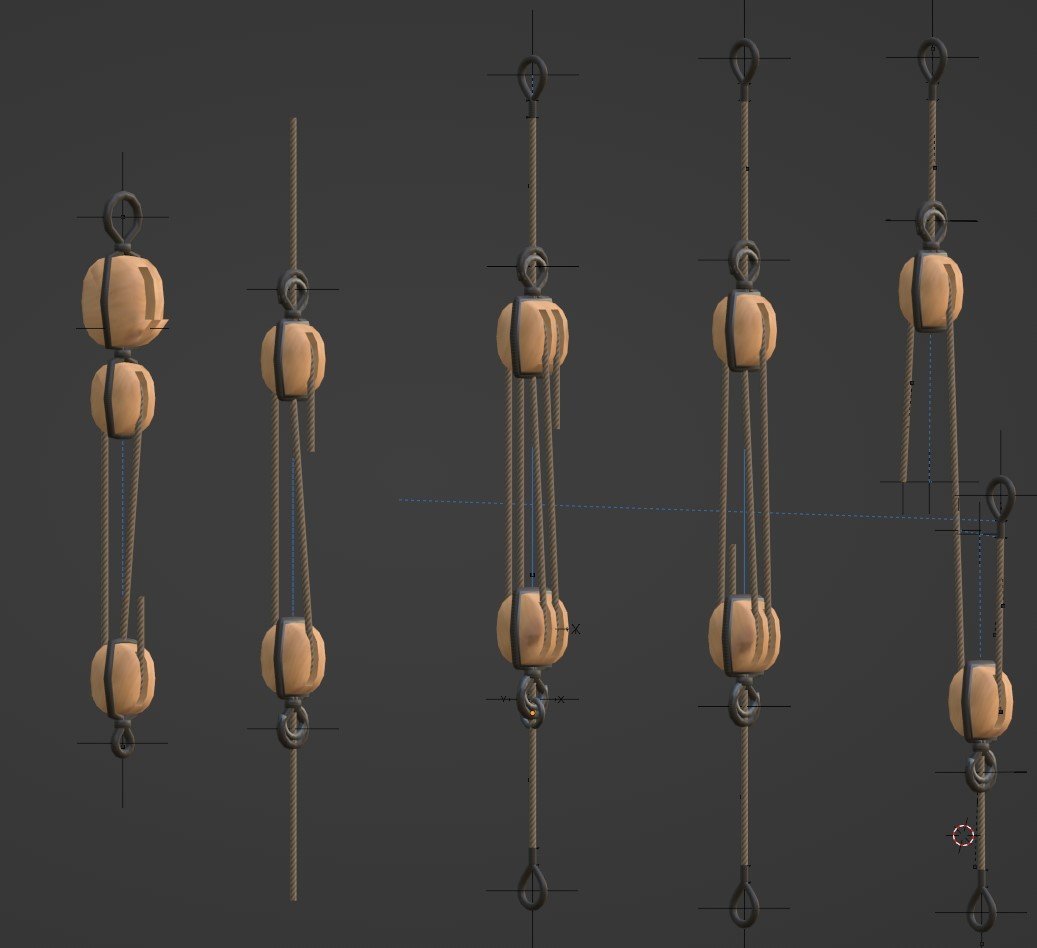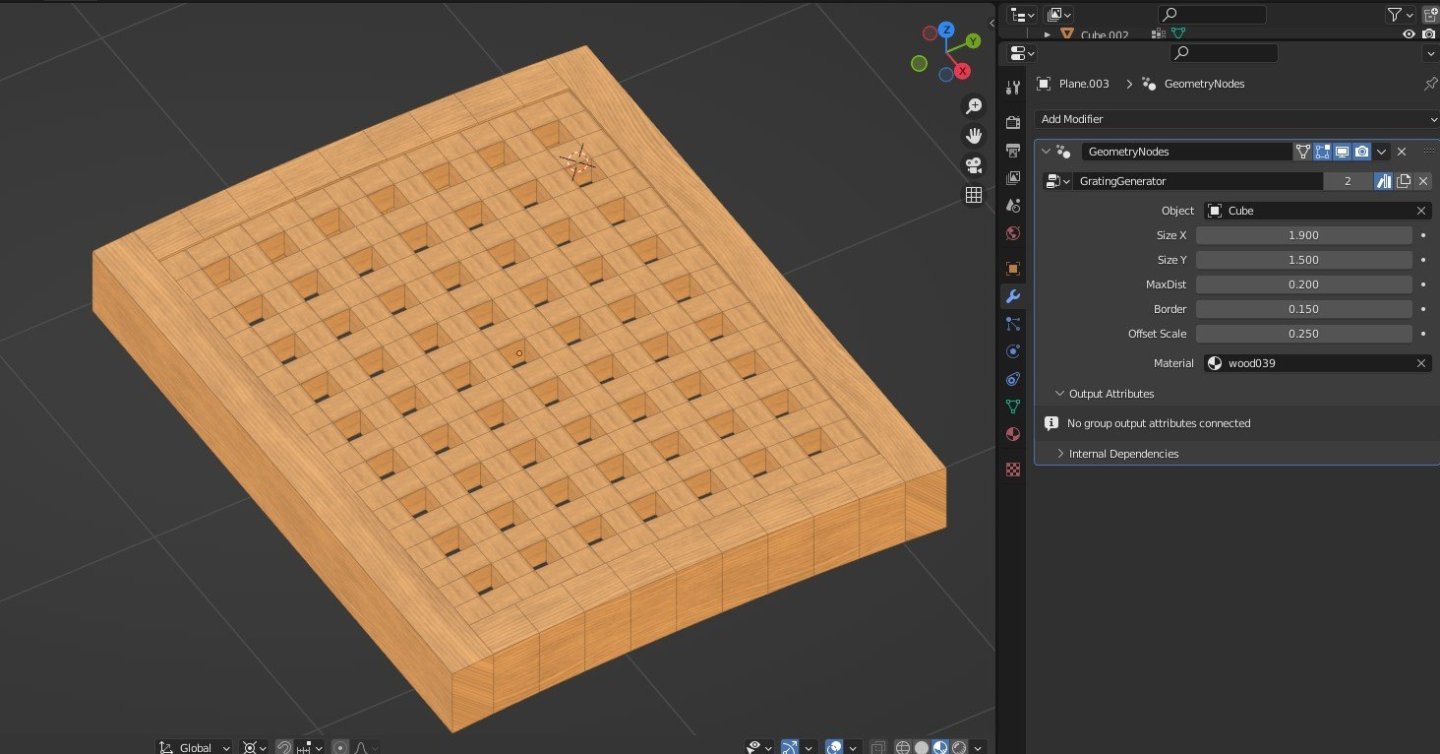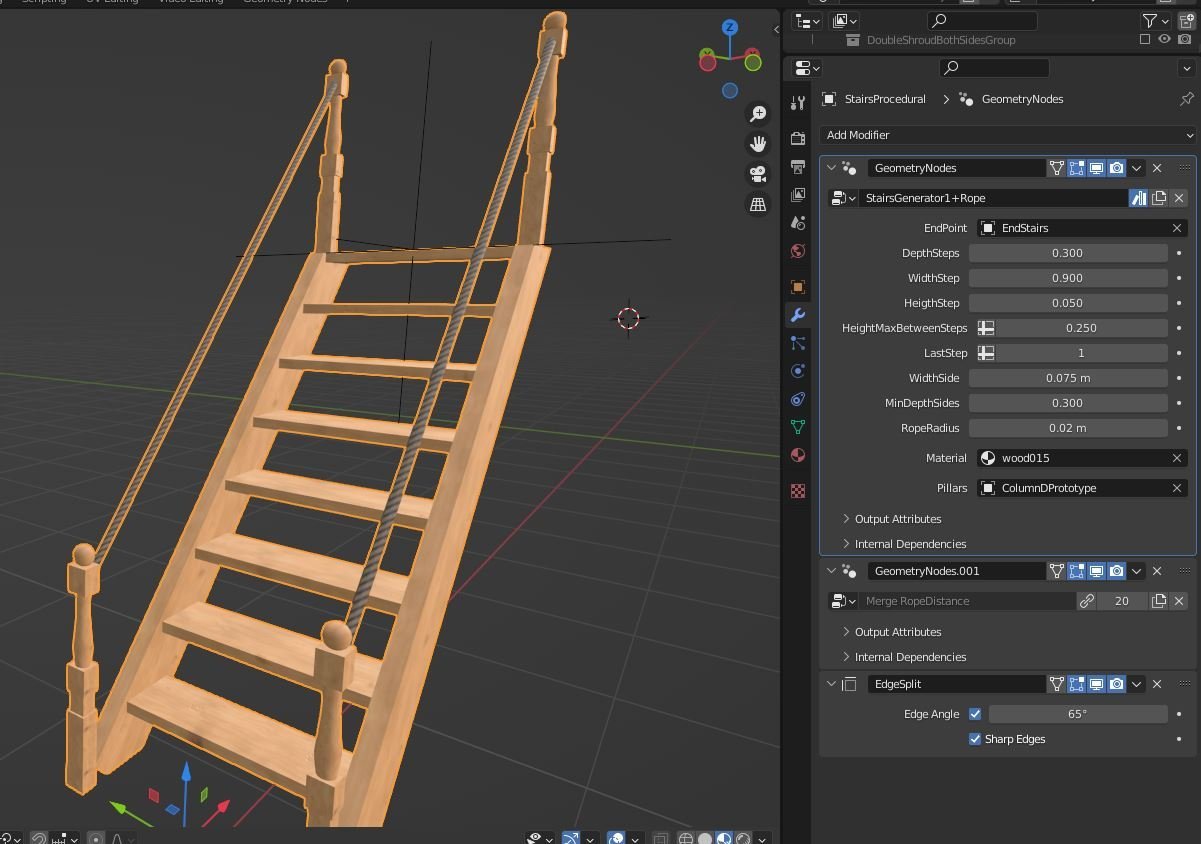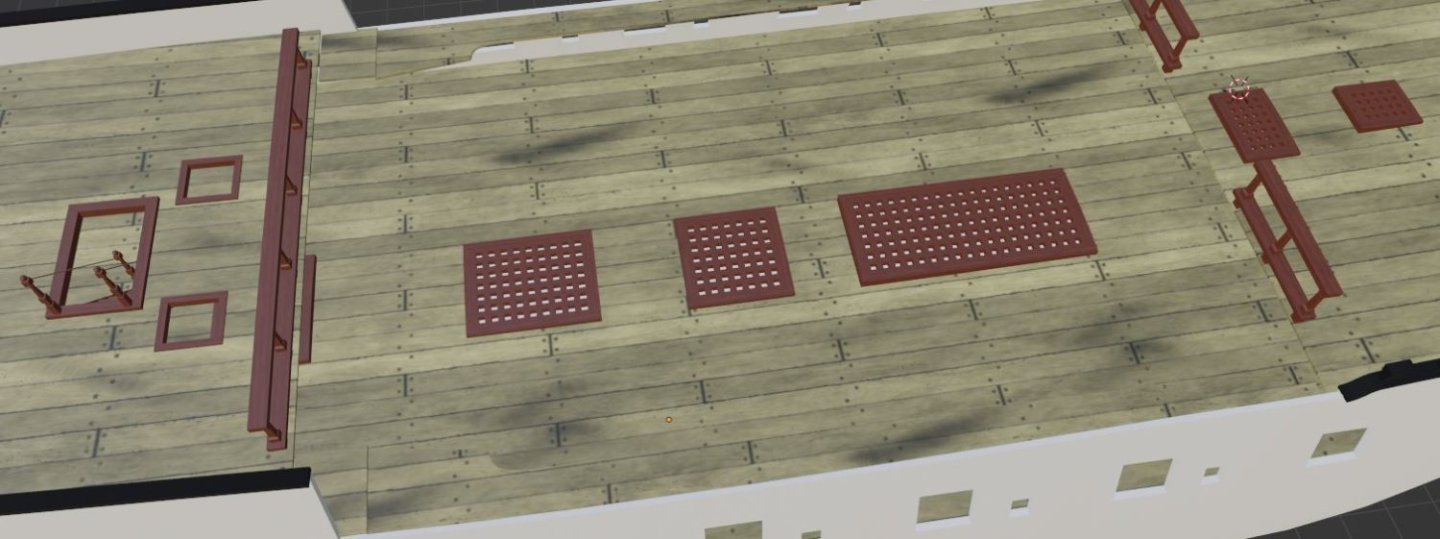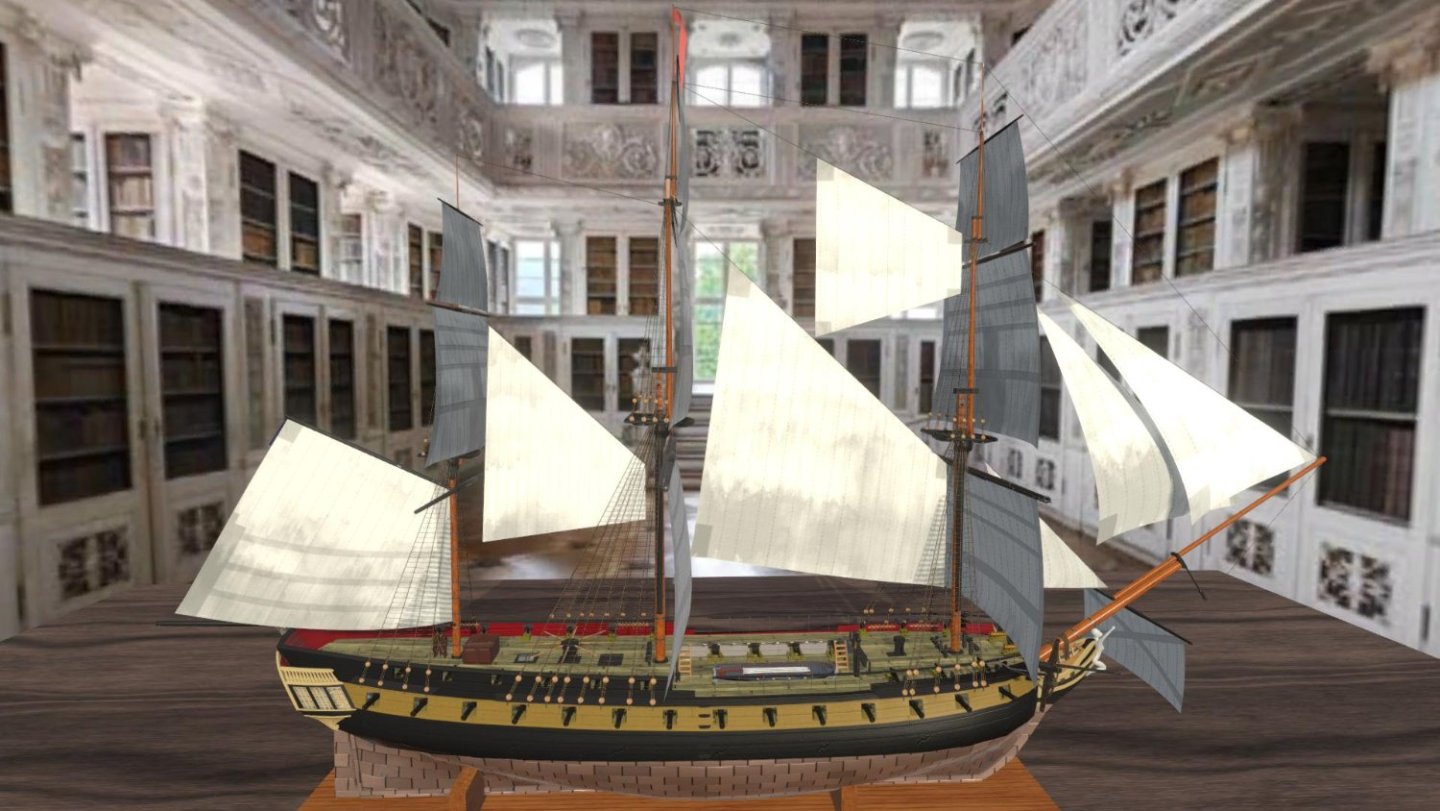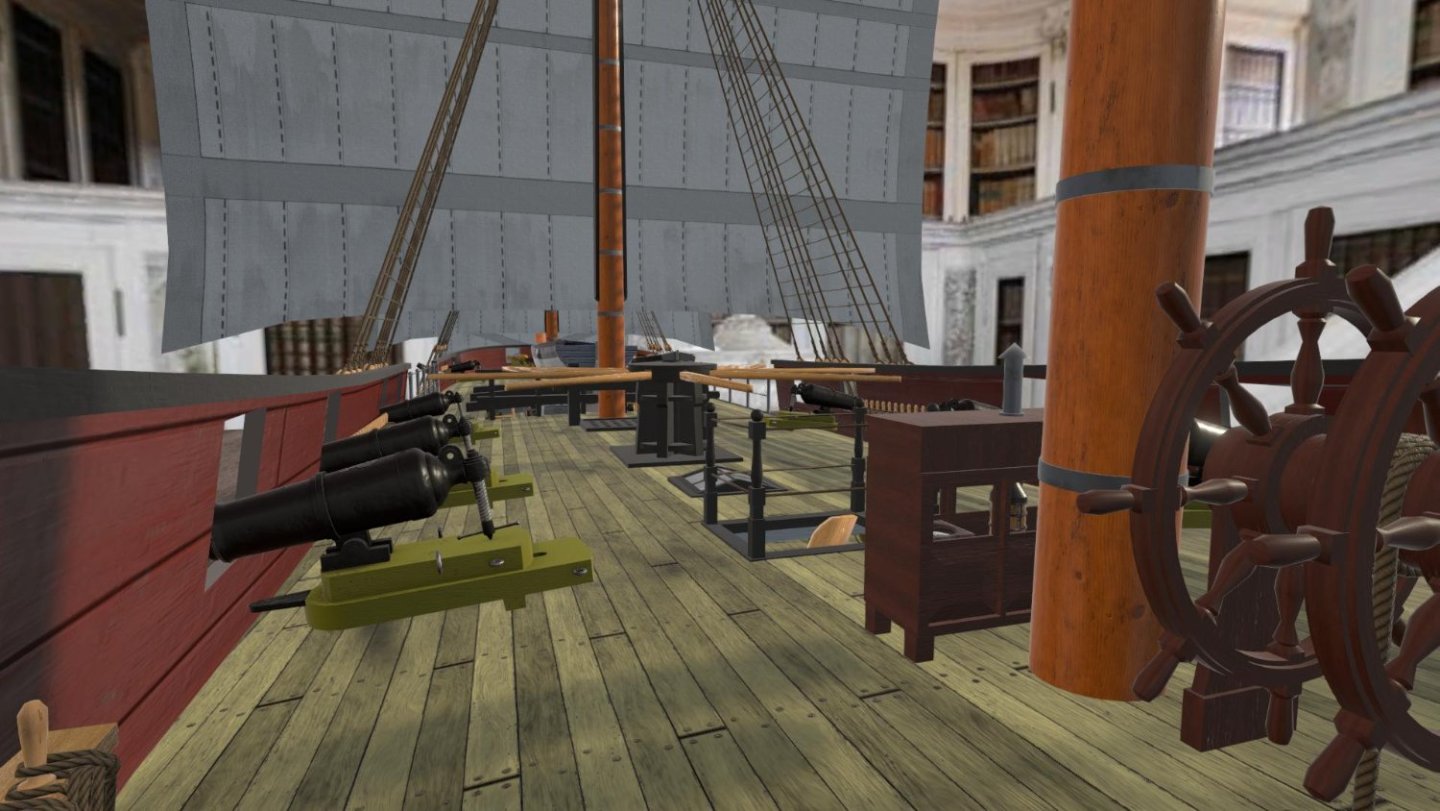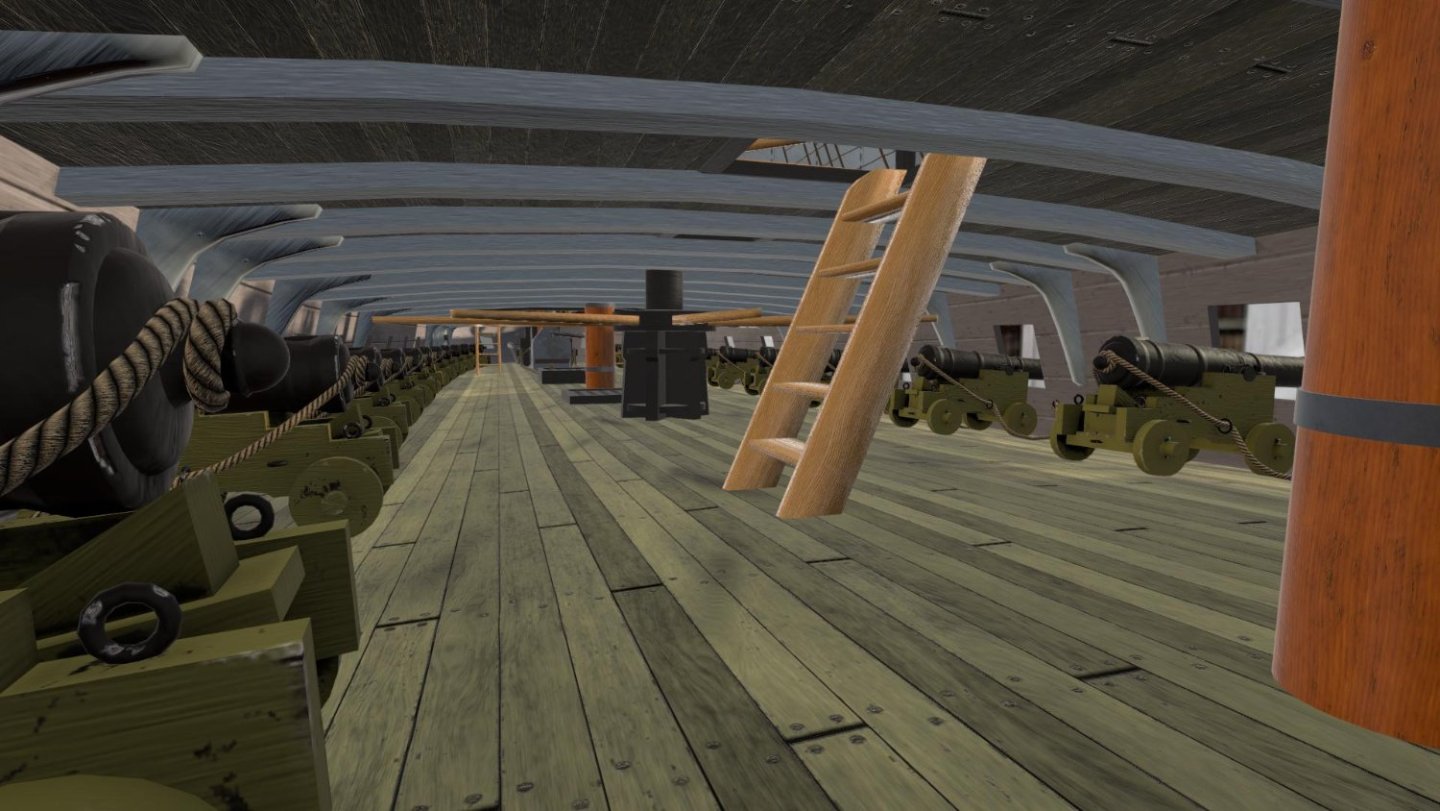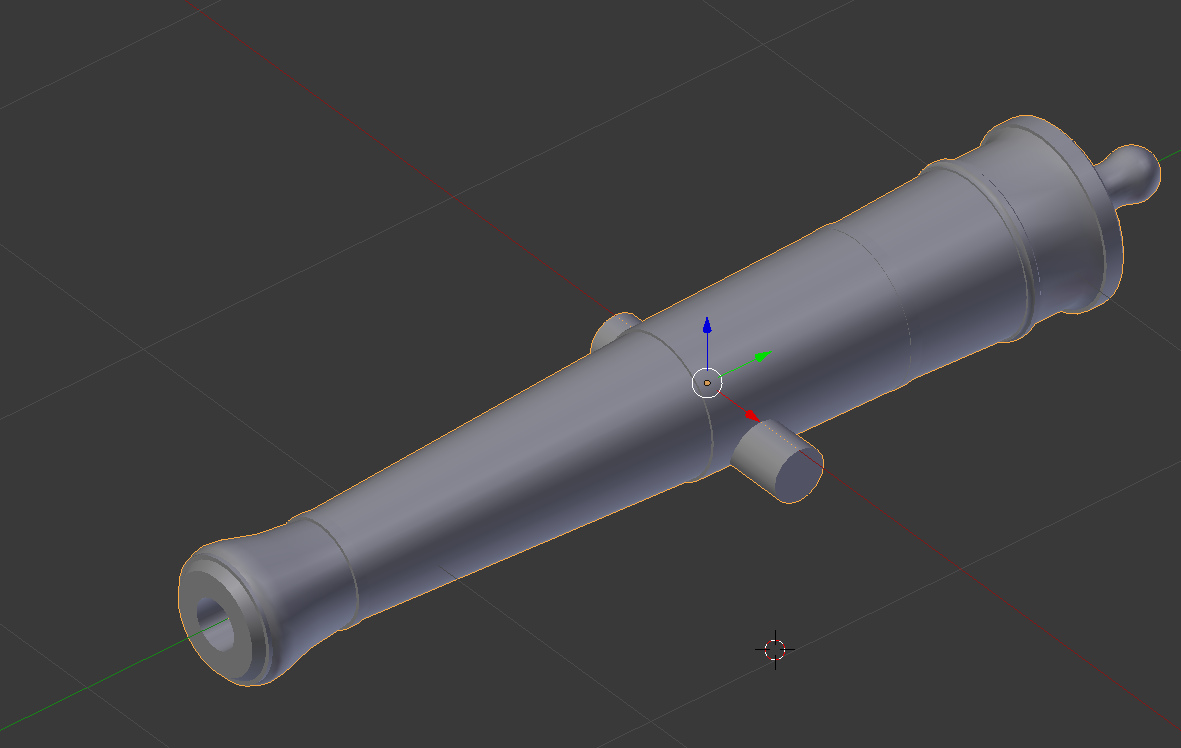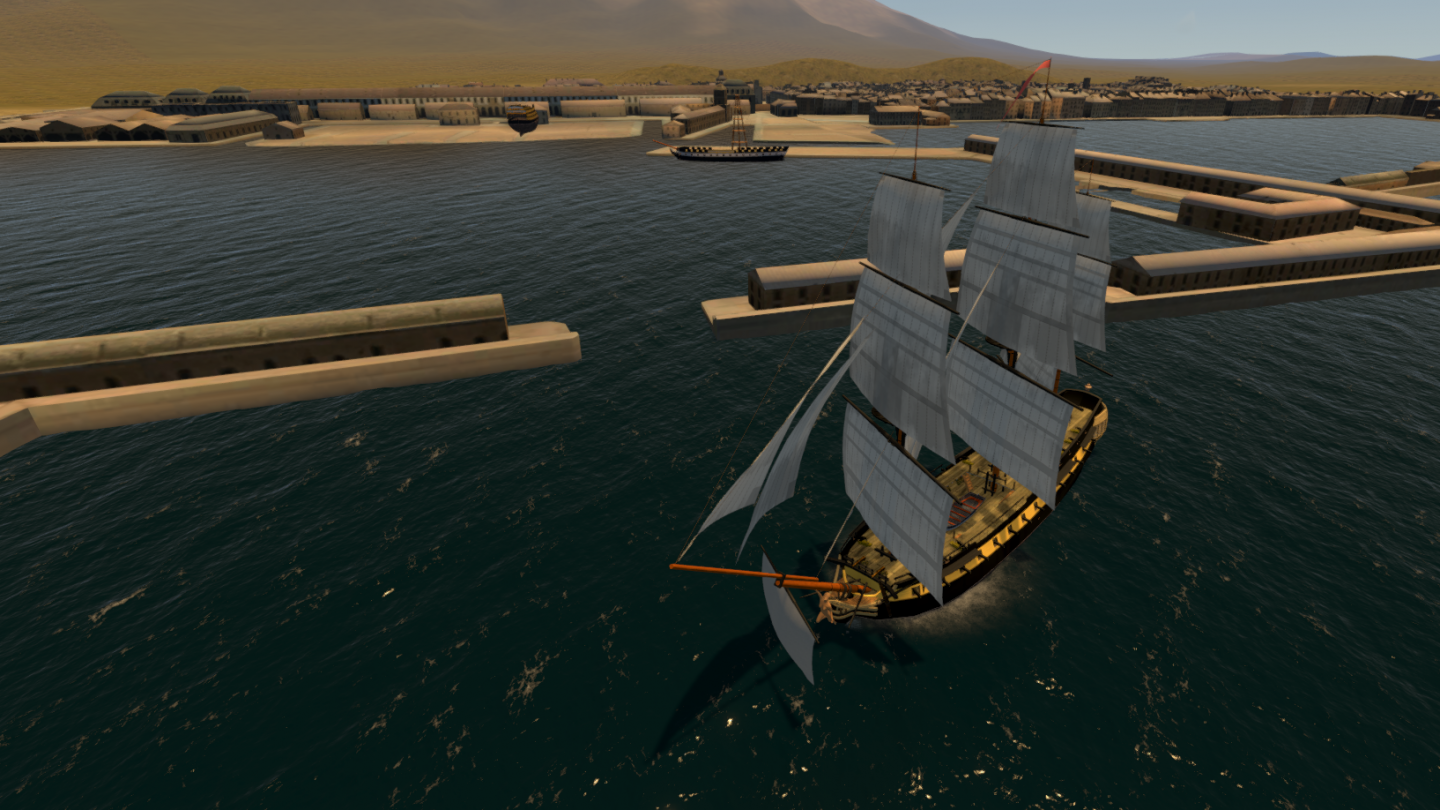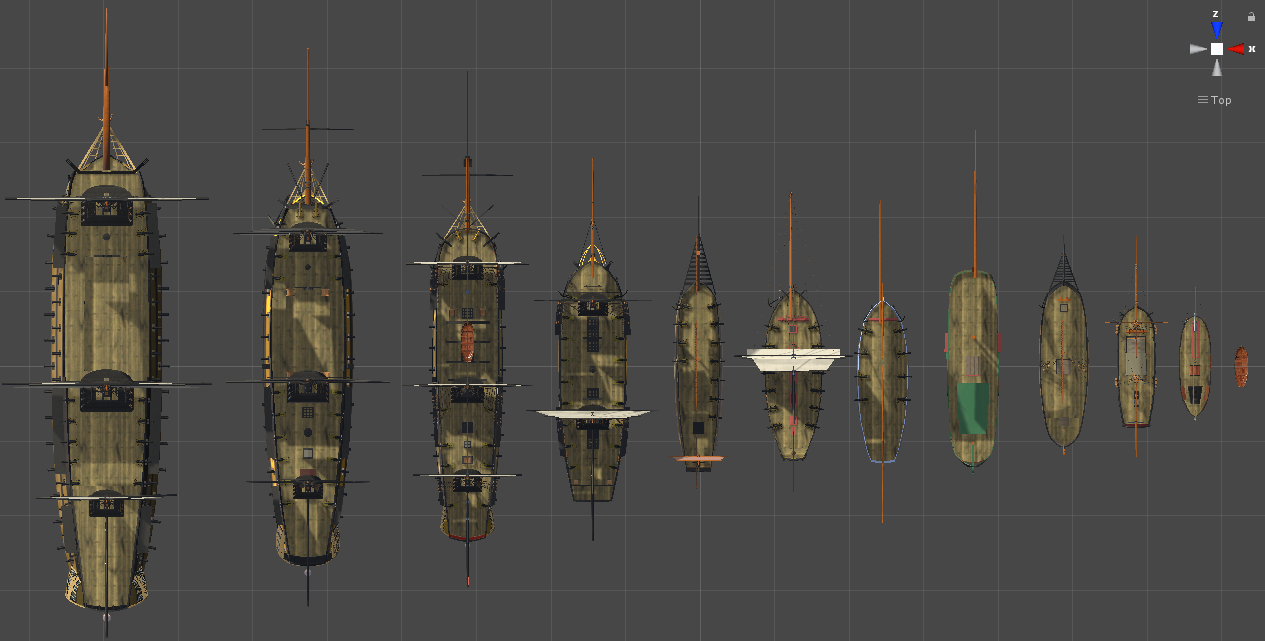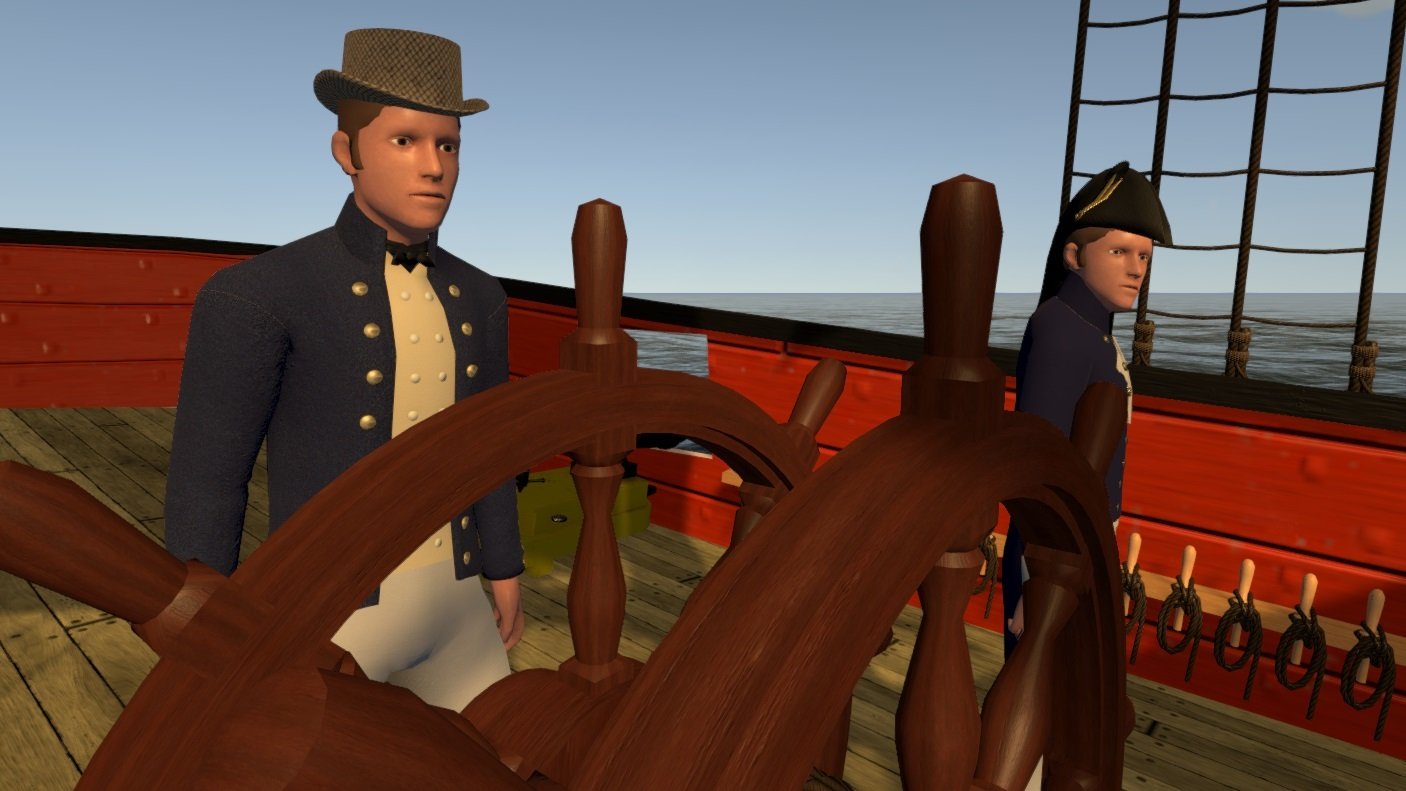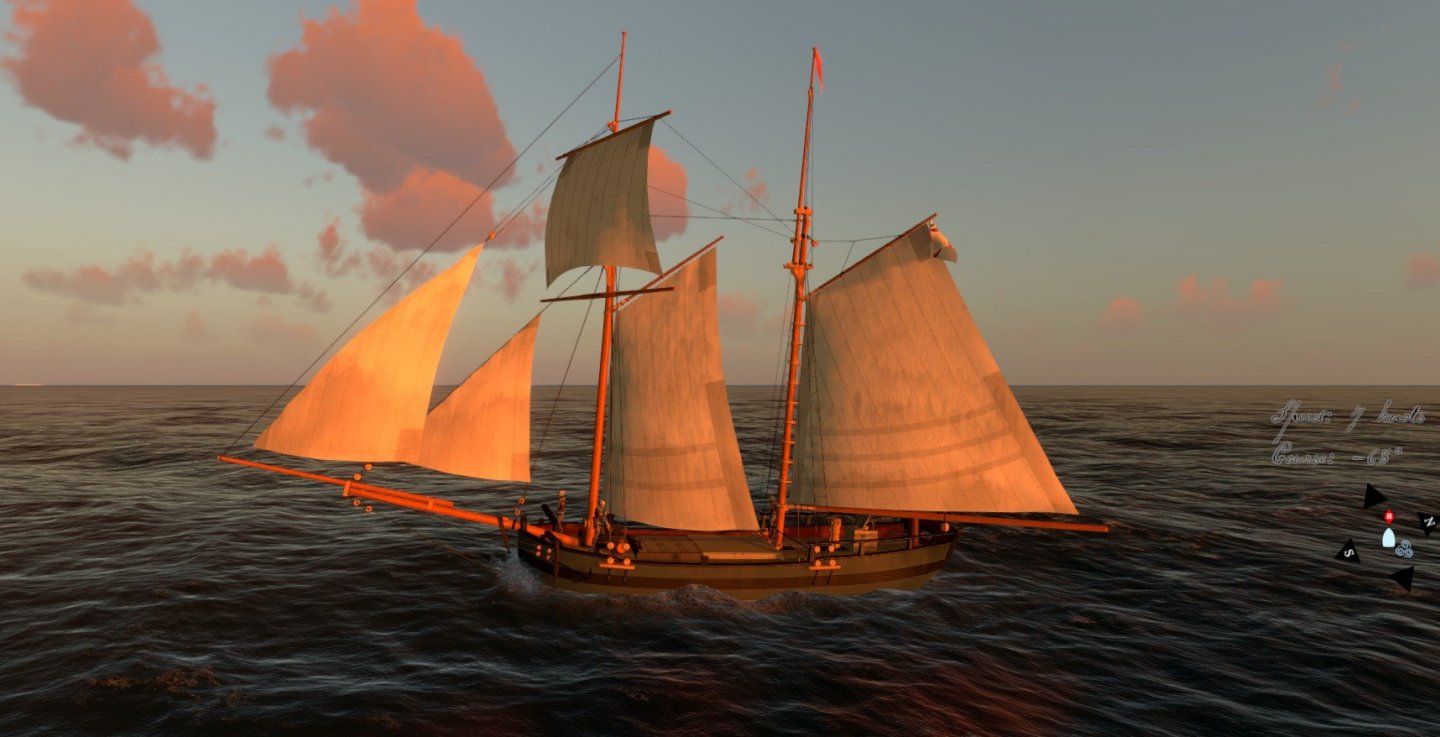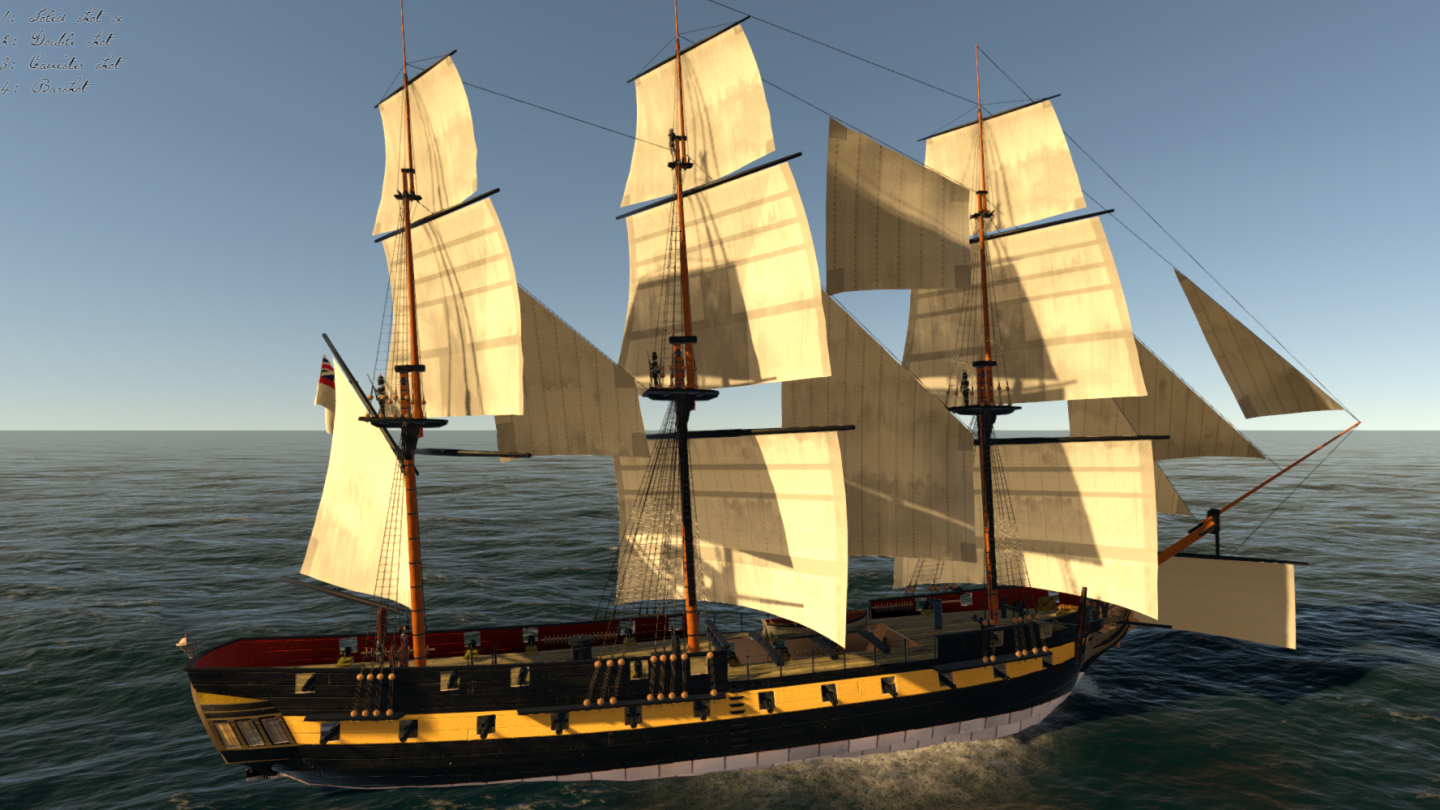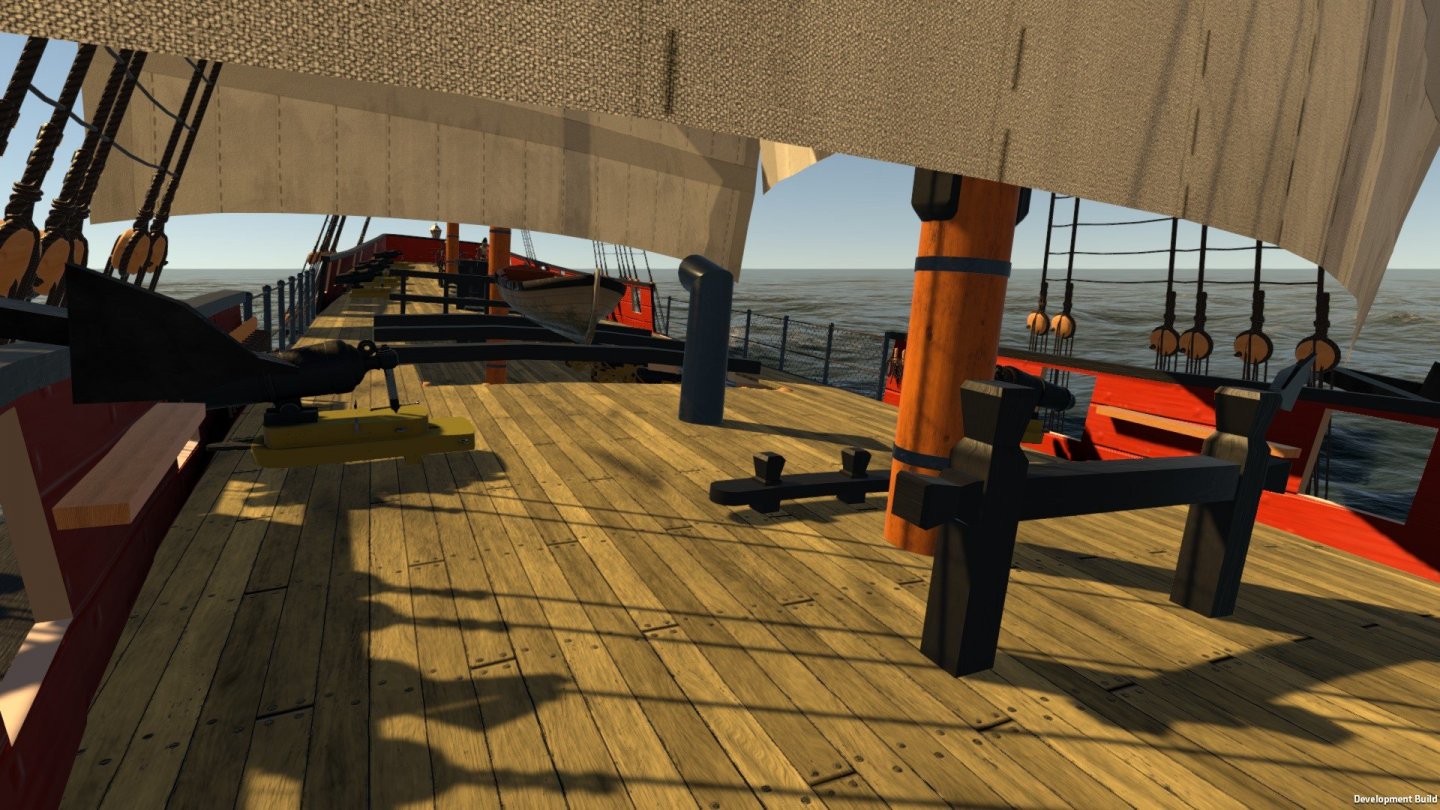-
Posts
14 -
Joined
-
Last visited
-
 Archi reacted to a post in a topic:
3D Models for PC naval simulation - The Weather Gage
Archi reacted to a post in a topic:
3D Models for PC naval simulation - The Weather Gage
-
Aidedecamp started following Sam Willis
-
 Aidedecamp reacted to a post in a topic:
Type VIIC german U-boat 3D model
Aidedecamp reacted to a post in a topic:
Type VIIC german U-boat 3D model
-
 Aidedecamp reacted to a post in a topic:
Type VIIC german U-boat 3D model
Aidedecamp reacted to a post in a topic:
Type VIIC german U-boat 3D model
-
 Seventynet reacted to a post in a topic:
3D Models for PC naval simulation - The Weather Gage
Seventynet reacted to a post in a topic:
3D Models for PC naval simulation - The Weather Gage
-
 mtaylor reacted to a post in a topic:
3D Models for PC naval simulation - The Weather Gage
mtaylor reacted to a post in a topic:
3D Models for PC naval simulation - The Weather Gage
-
Not really about modelling, but it shows one of my ship models in the intended use. Slightly different weather and light than former images. Also some more detailed running rigging The sailing is a bit reckless to show some terrain i.e. no captain would get to so close to land or rocks and with such amount of sail in reality (several ships “were harmed” against the rocks during the filming 😜) All the footage is real gameplay (with some time and weather manipulation at the end) The final lighthouse and rocks are modelled after the real Eddystone lighthouse and rocks, SSW off Plymouth Sound (state of 18th century / Smeaton's lighthouse ... currently the lighthouse is on land: Eddystone Lighthouse - Wikipedia) Uploading to youtube seems to reduce quality too much because of darkness/fog/rain (the text at the beginning and the last brighter shot look sharper … like my original local video) This is the best I could get after several uploads
-
 TheDuckDetective reacted to a post in a topic:
3D Models for PC naval simulation - The Weather Gage
TheDuckDetective reacted to a post in a topic:
3D Models for PC naval simulation - The Weather Gage
-
 daHeld73 reacted to a post in a topic:
Age of Sail 2 - 3d ship models for PC wargame
daHeld73 reacted to a post in a topic:
Age of Sail 2 - 3d ship models for PC wargame
-
 Aidedecamp reacted to a post in a topic:
74 Gun | Ship of the Line - 3rd Rate | Blender
Aidedecamp reacted to a post in a topic:
74 Gun | Ship of the Line - 3rd Rate | Blender
-
 mtaylor reacted to a post in a topic:
3D Models for PC naval simulation - The Weather Gage
mtaylor reacted to a post in a topic:
3D Models for PC naval simulation - The Weather Gage
-
 Aidedecamp reacted to a post in a topic:
3D orienting of ship blocks in Rhino
Aidedecamp reacted to a post in a topic:
3D orienting of ship blocks in Rhino
-
Lately the focus of this project has been the development of more efficient ways to model ships. Such a simulation needs some variety of models (it's boring to meet always the same ship models) and this means having a faster development pipeline. I was already reusing many common parts (e.g. anchors, spars, steering wheels, ...) but some other parts other ship need to be always slightly different and appear often in the models, so methods to adapt this parts easily were necessary. Below some block combinations, rigged with hooks and object constraints. By moving the hooks to the proper attachment positions the ropes are automatically stretched and the UVs recalculated to make the textures look right. The blocks are rotated by the constraints to look in the proper direction. The blocks looks strange in this picture, since several possible attachment options are included: metal hooks, rings, ropes, ... the meshes not needed are simply deleted and the proper attachment is kept. Gratings are another example of components that vary slightly in the dimensions but have common structure. In this case the grating can be generated procedurally via geometry nodes (a blender feature to create meshes with algorithms). Width, length, depth, ... can be introduced (see menu at the right) and the part is generated instantly, so all the variations needed for a ship can be created in few minutes. UVs are also generated automatically, so only placing and cutting the decks is necessary Similar example with stairs, height, width and depth must be usually adapted, also via mask Below an example of several gratings of different sizes used on a deck and the stairs on the left.
-
 thibaultron reacted to a post in a topic:
HMS Indefatigable 1794 (prototype) by James H - Vanguard Models - 1:64 - FINISHED
thibaultron reacted to a post in a topic:
HMS Indefatigable 1794 (prototype) by James H - Vanguard Models - 1:64 - FINISHED
-
 AJohnson reacted to a post in a topic:
HMS Indefatigable 1794 (prototype) by James H - Vanguard Models - 1:64 - FINISHED
AJohnson reacted to a post in a topic:
HMS Indefatigable 1794 (prototype) by James H - Vanguard Models - 1:64 - FINISHED
-
 mtaylor reacted to a post in a topic:
HMS Indefatigable 1794 (prototype) by James H - Vanguard Models - 1:64 - FINISHED
mtaylor reacted to a post in a topic:
HMS Indefatigable 1794 (prototype) by James H - Vanguard Models - 1:64 - FINISHED
-
 BenD reacted to a post in a topic:
HMS Indefatigable 1794 (prototype) by James H - Vanguard Models - 1:64 - FINISHED
BenD reacted to a post in a topic:
HMS Indefatigable 1794 (prototype) by James H - Vanguard Models - 1:64 - FINISHED
-
 Aidedecamp reacted to a post in a topic:
HMS Indefatigable 1794 (prototype) by James H - Vanguard Models - 1:64 - FINISHED
Aidedecamp reacted to a post in a topic:
HMS Indefatigable 1794 (prototype) by James H - Vanguard Models - 1:64 - FINISHED
-
Probably most of them ... but "Master and Commander: The Fas Side of the World" kept the cannons in the captain's cabin. The cannons can be seen in several scenes in the captain's cabin. I think even during the dinner's scene in the cabin, with so many people in the room, I think the cannons are still inside.
- 488 replies
-
- Indefatigable
- Vanguard Models
-
(and 1 more)
Tagged with:
-
 Aidedecamp reacted to a post in a topic:
La Mahonesa 1789 by native one - scale 1/48
Aidedecamp reacted to a post in a topic:
La Mahonesa 1789 by native one - scale 1/48
-
This project is still going on, lately with less focus on ship modeling and more on other aspects like simulation mechanics (e.g. use of boats) or modeling of buildings and characters Recently I wanted to show somebody the 3D models , so I developed a feature to see the models outside of the sailings simulation. I call this feature "the museum" since it displays several models (which are shown in 1:1 scale in my original simulation) as scale models in a virtual museum. It's possible to move the camera all around the model, zoom into details or even move the camera into the model (much more options than looking at real models behind glass in a real museum). The program should run on any decent computer with a graphics card and windows (i.e. no special viewer or 3d editor are necessary ). Here is the link to the program if anybody wants to take a look and give some feedback: https://drive.google.com/file/d/1DbcINDr9eUVOFzdudRb64tGeuRXngyND/view?usp=sharing Below you can see some pictures showing how you can see the models directly in the program For the instructions on how to move the camera or to exit the program, simply press the "Esc" key only the first model is visible.
-
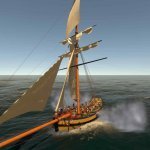
3D drawings 18pdr at 1/64 scale
Aidedecamp replied to Barbossa's topic in CAD and 3D Modelling/Drafting Plans with Software
Hello Christian, do you want to have only the barrel 3D-printed or do you want to have also the carriage? If you want to have only the barrel of the cannon, I have already modelled in 3D a french 24 pdr barrel of that time. In fact I also have the plans of French 1782 Venus and have been working on a 3d model of the ship (you can see a couple of images of my Venus model (WIP) in the thread for my project 3D Models for PC naval simulation - The Weather Gage ) Comparing the 24 pdr barrel model with the barrels shown in the Venus' plans, it is very close indeed. So I think by scaling it down, it could fill the role. The only difficulty right now is that the model is not ready for 3d printing (I modelled it for a 3D game, not for printing). The model is not "manifold" and cannot be printed in the actual state. I can test if it can be converted for 3D printing in an easy way. Maybe the polygon resolution is perhaps lower than what is ideal for 3D printing, but I cannot imagine right now how it would look like in scale 1/64 as printed model -
 Aidedecamp reacted to a post in a topic:
Binho's Digital Shipyard
Aidedecamp reacted to a post in a topic:
Binho's Digital Shipyard
-
Thanks, I agree on the quality of the plans and I'm doing it in this way. I saw the same on the plans of Commerce the Marseille, so I'll keep shroud's ends aft for models based on french ships and keep them forward fo the models based on british ships, since this difference seems to depend on nationality.
-
 Aidedecamp reacted to a post in a topic:
3D Models for PC naval simulation - The Weather Gage
Aidedecamp reacted to a post in a topic:
3D Models for PC naval simulation - The Weather Gage
-
jchbeiner started following Aidedecamp
-
Currently I'm working on my 18 pdr frigate model, which is based on the french frigate Venus (plans from Ancre). I chose this particular frigate not only because of the detailed plans available, but also because it belongs to the french Hebé class of frigates, which was copied and further developed in both french and british navies (as Leda class in the Royal Navy). In this way I hope that this model can represent many frigates which were really serving in both navies during the simulation period (1792 - 1815). Anyway, I was modelling the shrouds of this ship as I have been doing for previous models (HMS Surprise, HMS Cruizer, Cutter Alert, ...) with the shroud's ends facing forward (i.e. almost routine, see picture below). However then Venus' plan shows the shroud's ends facing backwards, what I noticed luckily after modelling only 4 shrouds. Does anybody know if this different shroud's setting depend from the nation? (i.e. France backwards, Britain forwards). What about other nations? I assume I had modelled the shrouds always in the same way since most of my models were based on british plans or I was consulting british books (e.g. Darcy Lever - Young Sea Officer's Sheet Anchor) Lately the ship's modelling was a bit slower since I concentrated on other aspects of the simulation, like generating the coast terrain and adding ports. Below you can see the example of the french port of Toulon and the same Venus frigate model (without shrouds) at the entrance. The 2 ships in the port facilities are 2 other WIPs.
-
Now I'm working on the textures for one of my frigates and I'm assuming that the interior of the quarter galleries would be painted in white (as it's the case with most other interiors) even the side of the hull within the gallery. To check this assumption I have been looking many of the paintings that I use as a reference, but I realize that in all cases the glass of the quarter galleries is painted simply blue i.e. not showing the color of the quarter gallerie's interior. Could anybody confirm this assumption or correct it ? Thanks in adavance. To give also some update, here a size comparison of the currently working ship models: From left to right: - 74-gun ship of the line - 18pdr frigate - 9pdr frigate - Brig - Barque - Cutter - Lugger - Smack - Tartane - Small merchant schooner - Gunboat (single cannon) - 18ft yawl When I start a model I find somehow fascinating to be able to compare directly the different ships (before I had only plans with different scales) and get an impression of the relative sizes.
-
Thanks for your comment Moab! I started in 2015 with a basic prototype and took me 2-3 years to learn the tools for modeling, texturing, animating, … and figuring out some solutions for the simulation. So really productive are only the 2-3 last years. While checking when I started this project I realized the video I posted last time is already more than 2 years old, so I thought I can show a newer one showing some of the latest updates. You can see my 9pdr frigate based on HMS Surprise in moving action and the new marine models shooting from the tops to the enemy seaman below
-
wtimlen started following Aidedecamp
-
Thanks Denis for your feedback about the rear wake, I'll consider it. I'm curious, when you write about "number" do you mean something like speed or number of waves? Or do you mean something more fluid mechanics specific, like the Reynolds number? Now I paused the work on ship models or simulation mechanics and started working on some models for the ship's crews. Until now I had only placeholder models for the crew (i.e. robots, if somebody looks at the video). Now the illusion of being on a ship is much better than before with a placeholder crew These are my first attempts with human models, therefore a lot of improvement will still be necessary. See below a royal navy lieutenant and seaman around 1800.
-
Thank you very much Rick for your compliments! I've been looking on the topic boat wake because of your question. I could add a good wake at the sides but I still have to find a good way to achieve a believable wake behind the ship. As long as the ship is sailing in a straight line the wake behind it looks fine, but I still have no way to curve the wake when changing direction (right now the wake turns with the ship and the illusion is broken). I have sailed with several tall ships and I was always fascinated by the wake at the front and sides of the ships, but for some reason I looked not so much behind the ship for that rear wake Below you can see an example of the subtle wake which I can simulate right now at the sides of the ship. This schooner game model is based on the plans for schooner Port Jackson.
-
Thanks for your welcome and your comments. I had not noticed too much that wind was not being affected by wind. I looked into it and added the influence of the wind on the smoke, hopefully it is noticeable in a future video. I think I have also to work a little bit on the randomness of the cannon smoke in the future (looking a lot of cannon smoke in slow-motion lately) About your thin bulwarks comment, do you mean the bulwarks on the brig in the video or the bulwarks on the frigate in the pictures? Or both?
-
Aidedecamp changed their profile photo
-
Hi, I want to show you the models that I build for a naval PC simulation, which I develop as a personal project. The simulation called "The Weather Gage" is set during the French Revolutionary Wars & Napoleonic Wars and it's possible to command in real time different ship models. I'll start with one of my favorite models with better progress, the 9pdr sixth-rate frigate based on the plans of the HMS Surprise (formerly French corvette Unité) Other models which are already functional in the simulation (which I can show in following posts): - Armed cutter based on the Cutter Alert - 18-gun brig based on the HMS Grasshoper (Cruizer Class) - later dutch "Irene" - 18pdr 5th-rate frigate based on the Venus (Hebe Class) - 74-gun ship of the line based on the Pompee (Temeraire Class) - Lugger based on the Le Courer - Small merchant schooner based on the schooner for Port Jackson - Tartane It would be great to get some feedback about the overall appearance of the models. I try to get a good overall appearance as I cannot invest too much time in small details. For example the rigging is in some cases difficult to model to be look like functional i.e. be animated. Also I have to distribute my time between the modelling & animations of the ships (and other elements like cannons, buildings, terrain) and gameplay development (e.g. AI, physical simulation, sound, …) For a better impression about the simulation in action: The robots are of course still placeholders for the real crew which should follow some time later Still not too good at modelling crew :S Thanks in advance for your comments!
About us
Modelshipworld - Advancing Ship Modeling through Research
SSL Secured
Your security is important for us so this Website is SSL-Secured
NRG Mailing Address
Nautical Research Guild
237 South Lincoln Street
Westmont IL, 60559-1917
Model Ship World ® and the MSW logo are Registered Trademarks, and belong to the Nautical Research Guild (United States Patent and Trademark Office: No. 6,929,264 & No. 6,929,274, registered Dec. 20, 2022)
Helpful Links
About the NRG
If you enjoy building ship models that are historically accurate as well as beautiful, then The Nautical Research Guild (NRG) is just right for you.
The Guild is a non-profit educational organization whose mission is to “Advance Ship Modeling Through Research”. We provide support to our members in their efforts to raise the quality of their model ships.
The Nautical Research Guild has published our world-renowned quarterly magazine, The Nautical Research Journal, since 1955. The pages of the Journal are full of articles by accomplished ship modelers who show you how they create those exquisite details on their models, and by maritime historians who show you the correct details to build. The Journal is available in both print and digital editions. Go to the NRG web site (www.thenrg.org) to download a complimentary digital copy of the Journal. The NRG also publishes plan sets, books and compilations of back issues of the Journal and the former Ships in Scale and Model Ship Builder magazines.

